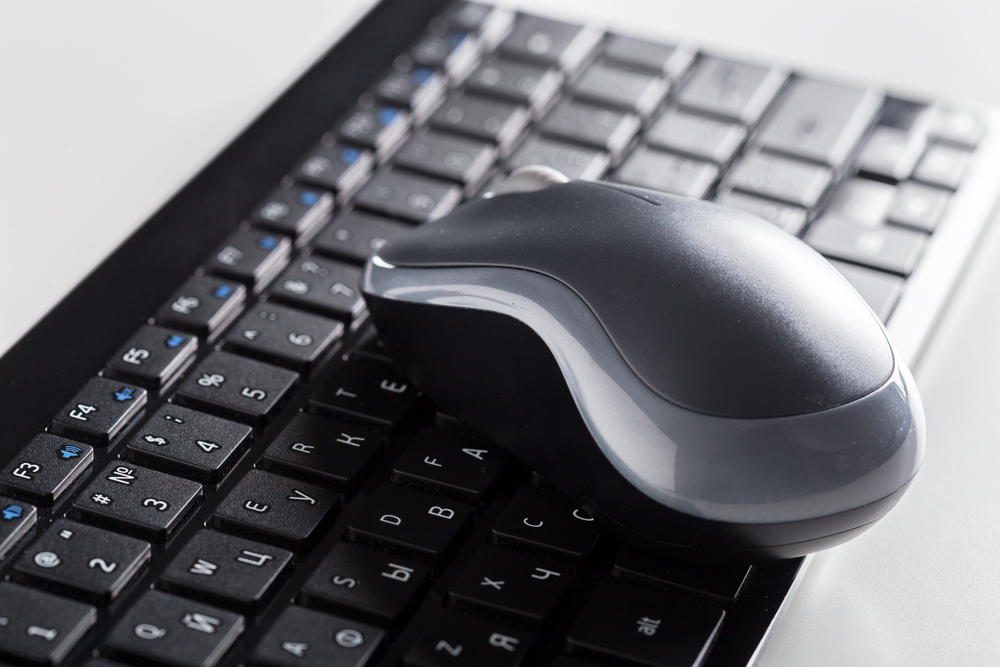Find Your Perfect Business Degree
www.business-management-degree.net is an advertising-supported site. Featured or trusted partner programs and all school search, finder, or match results are for schools that compensate us. This compensation does not influence our school rankings, resource guides, or other editorially-independent information published on this site.
Knowing how to type on a computer keyboard is an essential skill because everyone needs to be able to use computers in today’s world. While you could type with two fingers, searching for the right keys to type words, this process is much slower and less effective. The touch method of typing involves learning where the keys are and which fingers to use to push them without having to move your hands or look at the keyboard.
As you practice, you can get faster and faster until you’re able to type words and phrases quickly and easily. It’s also important to know how to use a computer mouse, since you’ll also need to use a mouse as you use a computer.
A computer keyboard has three rows of letters and one row of numbers and symbols. The middle row of letters is known as the “home row,” and this is the row where you rest your fingers as you type. With your fingers resting on eight keys in the home row, you can reach above to the upper row of letters and the row of numbers and symbols and below to the lower row of letters to type words and phrases.
Each finger has specific keys assigned to it, and you use the correct finger to push the keys to enter the letters, numbers, and symbols needed. Your two thumbs rest on the space bar, and you can use either thumb to enter spaces between words and sentences.
When you first start learning how to type, you will feel like you want to look at the keyboard to find the keys. However, once you learn which fingers press which keys, you’ll be able to push the keys without looking at the keyboard.
At first, it’s important not to worry about typing speed. You need to establish the habit of pressing the keys with the right fingers. Take the time you need so you can type without making mistakes. After you learn the basics of keyboarding, then it’s time to practice so you can increase your typing speed.
Take regular breaks when you’re typing so you don’t get tired and frustrated. It’s common to make a lot of mistakes in the beginning. Learning a new skill takes time, but with regular practice, you’ll be touch-typing and beginning to build up speed in no time. Try to practice touch-typing every day. Soon, your fingers will know what to do without a lot of thought.
This is known as muscle memory: When you practice a movement enough, your muscles will know what to do without you having to think hard about each letter you want to type. If you are practicing and you start making a lot of mistakes, take a break. Once you’ve rested and you feel refreshed, you’ll be able to practice more effectively.
Sitting at a computer can be demanding on your body. Make sure your desk, chair, and computer are set up so you’re sitting comfortably. Your computer screen should be at eye level, about one arm’s length away from your eyes.
The keyboard should be directly in front of you, and your arms should be bent in an L-shape as you place your fingers on the keys. Your elbows should be comfortably at your sides while your fingers are on the keyboard, and you should be able to rest your wrists on a keyboard rest or on your desk when you’re not typing. Some people use a special wrist rest for their wrists.
Place your mouse on a mouse mat close to your keyboard so you don’t have to reach too far for it. As you sit in your chair, your feet should rest flat on the floor. If your feet don’t reach the floor, use a footstool. Your chair should have support for your lower back, and you need to sit with good posture to keep your body properly aligned. Don’t sit in the same position at a computer for a long time. Change positions and take short breaks often to avoid muscle strain.
Beginner
- Learn Touch-Typing
- Typing Tutorial
- Beginner Typing Lesson
- Basic Position in Ten-Finger Typing
- Learn How to Touch-Type
- Keyboarding Technique
- Typing Lessons for Beginners
Intermediate
- Typing Lessons: Intermediate Wrap-up
- Practice Your Typing Speed
- Intermediate Text-Typing
- Typing Lessons
- Keyboarding Online, Intermediate Level: Common Phrase Practice
- Typing Speed Test
Advanced
- Advanced Typing Practice
- Advanced Typing Tutorial
- Text Type Three
- Typing Speed Tests
- Free Typing Speed Test
- Keyboard Challenge
- Instant Death Typing Test
